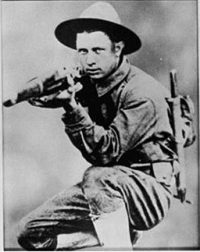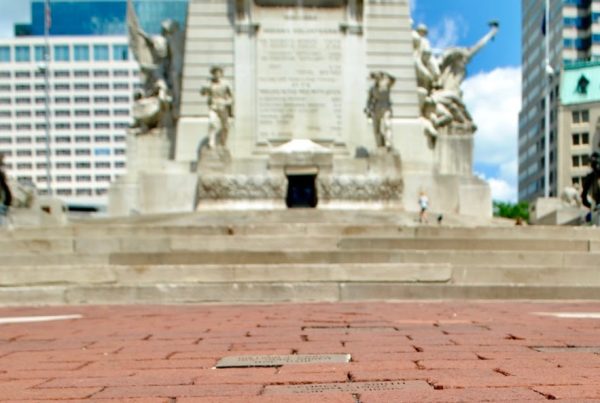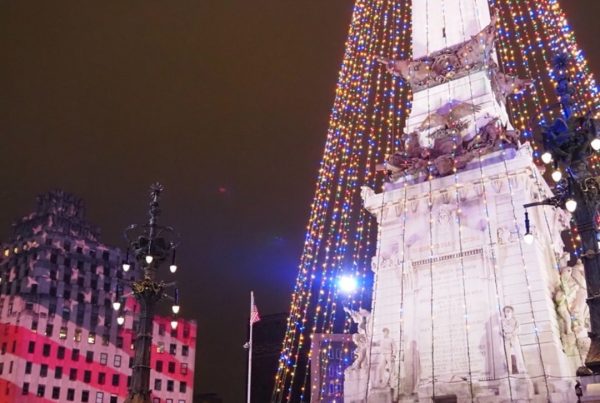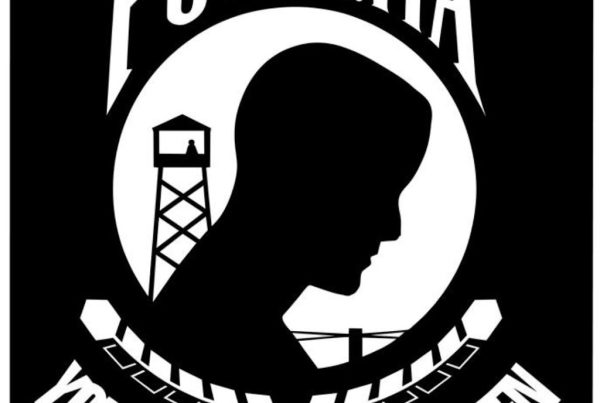U.S. Declares War on Germany
The early days of World War I lit a fire throughout Europe, fighting between the Axis and Allied powers erupted in 1914. While the Great War raged on – the United States kept their distance – evading the conflict. However, in April of 1917, as a result of sunken US merchant ships through submarine warfare – U.S. Congress, with the support of President Woodrow Wilson, declared war on Germany. This would be the first time American troops would defend foreign soil. Over the course of the 18 months the United States was active in World War I, 116,708 American military personnel were killed. The first of those to perish on the Western Front was James Bethel Gresham, from Evansville, Indiana.
James Bethel Gresham, Hoosier Hero
James Bethel Gresham was born on August 23, 1893 in Henderson, Kentucky to Alice Bethel Gresham (later Alice Dodd) and Green Gresham. James spent the first 7 years of his life in Henderson, until the death of his father in 1900. The family then moved across the Ohio River to Evansville, Indiana in 1901. In Evansville James attended Centennial School, but left at a young age to begin factory work to help support his family in their new hometown. In the spring of 1914 – as Europe was on the brink of war – James enlisted in the United States Army. His service began in Jefferson Barracks, St. Louis, Missouri, but he was soon transferred to El Paso, Texas – where he served under General John J. Pershing – patrolling the border with Mexico. James would stay in Texas for the next three years – until the United States entered World War I.
James was among the first Doughboys and the first Hoosier of the American Expeditionary Force (AEF) that left for France from Fort Bliss in June 1917. “Doughboy” was the nickname for the troops of General John J. Pershing’s American Expeditionary Forces, who braved the Atlantic to join the Allied armies in fighting against the Axis powers on the Western Front. James Gresham was a part of the 1st Division’s 16th Infantry – the second battalion to enter the French line in Lorraine.
On the evening of November 2, 1917, Gresham’s second battalion joined the first in the trenches at Bethelemont. During the night, the battalions traded positions. And in the early morning hours of November 3, 1917, German soldiers cut the wire at Bathelemont and slipped into the trenches. Their intent was to raid the trench and take supplies and prisoners – a common tactic of both sides in WWI. The raid was quick and violent and as a result, three Americans and three Germans were killed before the raiders fled back into the night. Corporal James Gresham, of Evansville, Indiana was one of the three Americans killed.
Corporal Gresham was buried near the battlefield with an inscription on the grave “Here lie the first soldiers of the illustrious Republic of the United States who fell on French soil for justice and liberty.” His body was later exhumed and returned to the United States following World War I. In 1921, he was laid to rest in Locust Hill Cemetery in Evansville, Indiana.
Remembering Corporal Gresham
In the years following the end of World War I, monuments, memorials and dedications were erected across the United States and Europe to honor and remember those who sacrificed their lives in the Great War. In Indianapolis, Cenotaph Square was constructed in 1931 to memorialize the nation’s first casualty of World War I: Corporal James B. Gresham from Evansville, Indiana.
Cenotaph Square is a sunken garden that sits on the North side of the Indiana War Memorials property. In the center of the sunken garden sits a black granite cenotaph, an idea that came from ancient times to commemorate leaders. A cenotaph is an “empty tomb”. The original intent of the tomb was to be the final resting place of Corporal Gresham, whose name is inscribed on the north face of the cenotaph. However his family preferred that his remains stay in Evansville. The features of the cenotaph include a raised black granite tomb with a bronze cover and four Art Deco-style black granite columns on each corner of the tomb—all topped by gold-leafed bronze eagles. Cenotaph Square is a lasting tribute to the bravery and sacrifice of Corporal James Gresham and all the men who paid the ultimate sacrifice for defending their country.
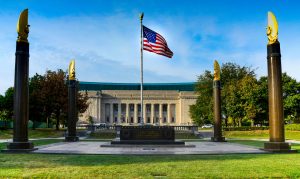
You can visit Cenotaph Square at the North end of the American Legion Mall any day between dawn and dusk. Learn more about Corporal James B. Gresham and all the Hoosiers who sacrificed their lives in World War I at the Indiana War Memorial Museum. Open Wednesday through Sunday from 9am to 5pm. Admission is free!

